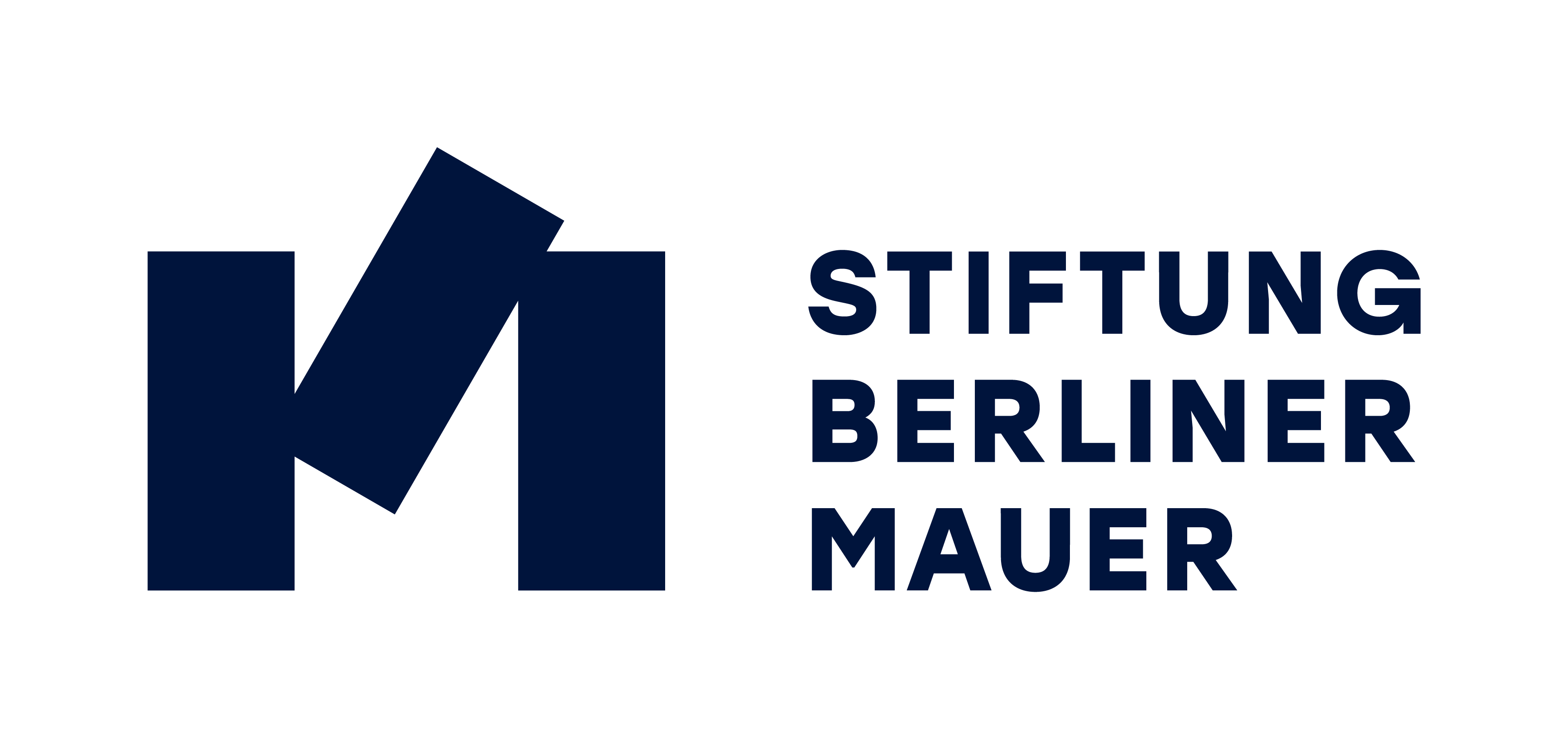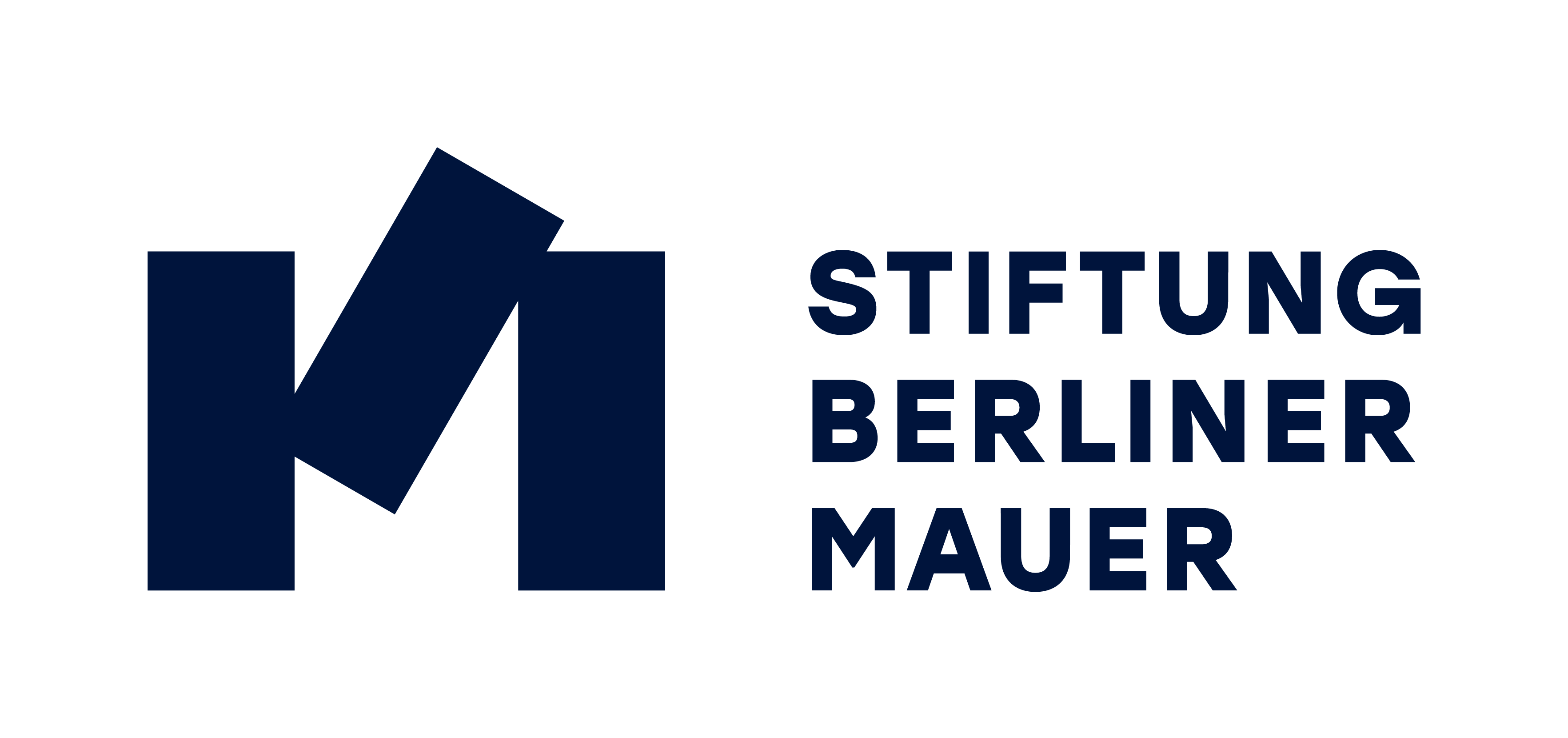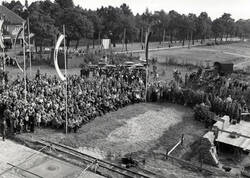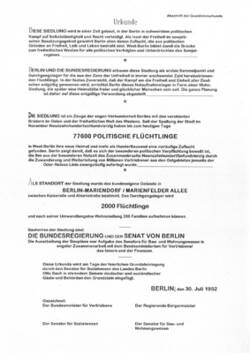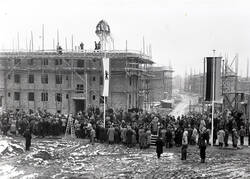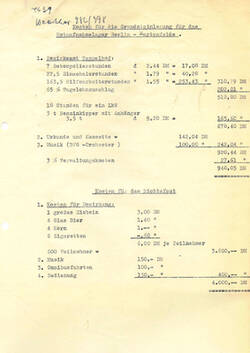Further Media
Can you see the stone plaque on the front of the house? If so, can you read the date on it? You may find reading the historical photo in the guide easier: It is June 30, 1952. The foundation stone for the Marienfelde Refugee Center was laid on this day. The man in the photo placing the foundation stone certificate on the wall is Otto Bach, then Berlin’s Senator for Social Affairs.
The certificate – which is still there today – states the purpose of the construction project: To provide an “initial assembly point and refugee camp” for all those from the GDR whose “liberty, life, and limb [were] threatened for political reasons.”
The reception center was built in the style of a rental housing complex, which sometimes made running it more complicated. However, this was done for pragmatic reasons: East and West Germany were expected to reunify soon, making inner-German flight unnecessary. Therefore, the conversion of the buildings into rental units was already considered during the planning stage.
The complex was designed to provide permanent homes for almost 300 families as soon as it was no longer needed as a point of arrival and emergency shelter.
If you look closely, you can see traces of the complex’s dual purpose as a reception center and housing complex. For instance, look at the gallery on your left – the long white porch in front of the museum. Behind it, you can still see the shop windows of three of seven stores planned to face the forecourt. While the complex was a reception center, the store areas were used as waiting rooms and offices. If the center had been turned into rental apartments as planned, the porch would have been opened, and stores would have moved in. However, that never happened. Today, the museum’s exhibition is located there.
